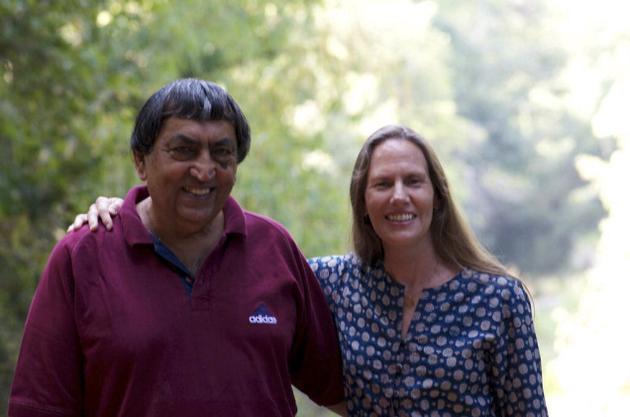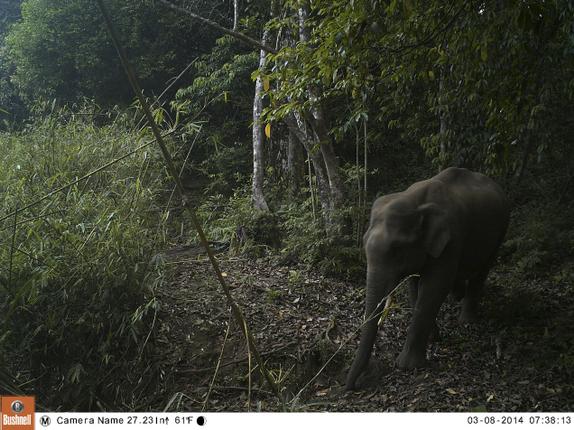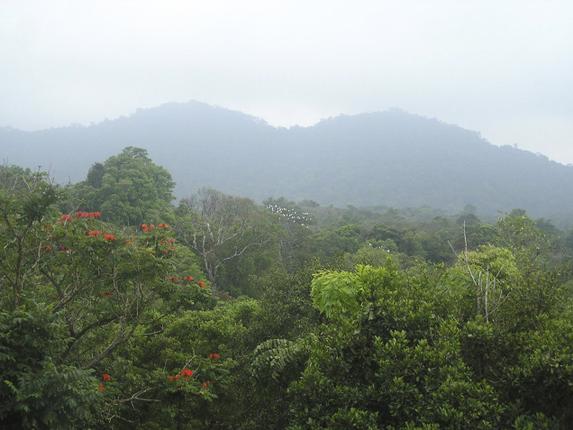On the eve of World Environment Day, Pamela Malhotra tells SRAVASTI DATTA about re-examining our obsession with technology and our lifestyles choices can have an impact on the environment

Her story is well-known. About two decades ago, Pamela Malhotra and her husband Dr. A.K. Malhotra bought 55-acres of land in the Western Ghats in Kodagu district, with the intention of reforesting the land that had fallen into various states of misuse. They Pamela and her husband were in the U.S. before they relocated to this land, in the Brahmagiri range, that is about 40 minutes away from Srimangala.
“K.M. Chinnappa of Wildlife First was the Warden at Nagarhole National Park when we first came to India in January of 1986. He It was he who encouraged us to buy land to protect in the Coorg/Kodagu district. We also met Ullas Karanth on that trip and also network with Ravi Chengappa of Cauvery Sene on environmental issues in the district,” says Pamela, who has dedicated her life toin protecting wildlife and the environment, and is a well-known speaker on climate change, watershed protection, bio-diversity and species extinction. Today that land has been converted into a 300-acres SAI (Save Animals Initiative) sanctuary of rich foliage and diverse species.
“The process took a long time. Did we ever expect to have the sanctuary we have today? No!” says Pamela, who was one of the speakers at the recently-concluded TedxBangalore.
“We took advice from the former owner of the 55 acres of land and the adivasis, because they have the knowledge of the native trees needed in that area. You need to understand which tree species belong where. The land was in various different conditions. The parts where cardamom was grown, there were a lot of shade trees, because cardamom requires a lot of shade, big native trees. But in the coffee plantations, big trees were taken out and there were smaller trees, because coffee requires sunlight. But coffee prices got de-regulated, so the cardamom plantations were pulled out, and they cut down the big trees. That was the first wave of deforestation. The second was when unregulated home stays were being built.”
Pamela says the Kodagu district is the source of fresh water for the Southern Indian peninsula. And so every drop of water that we take for granted in our cities is extremely precious. Bengaluru due to rapid, and often mindless, development is desperately holding on to the last vestiges of being a garden city. Even though forests do not lie within our immediate surroundings, we often take them for granted. Pamela says scientific studies have shown that 50 per cent of rainwater comes from forests, much more than oceans. So do we in our technology-obsessed cities have a responsibility towards Nature? Yes. Does the action of a single individual have an effect on climate change and conservation? Yes. Pamela says it is essential, therefore, to examine one’s lifestyle. “To save water, there is rainwater harvesting, recharging groundwater and conserving water. We also have to examine our obsession with technology. Do we need the latest iphone? Do we really need the latest tech toys? Rare earth minerals and materials are used in computers and mobile phones. And those materials, are just that, rare!”
Some of the measures we adopt to control diseases in cities is way off the mark. “Tanks are being poisoned to get rid of mosquitoes. But instead of poisoning tanks, see how we can breed frogs because they eat insects and mosquitoes. Swallows eat 2,000 mosquitoes! You could plant trees and small bushes in your backyard. It will also bring back small wildlife like butterflies and birds.”

Pamela says conserving our rainforests is about survival. “It’s not a touchy-feely thing,” she emphasises. She reveals trivia about wildlife that is relatively unknown: “Elephants are the number one protectors of the forest. Recent studies by the Indian Institute of Science have shown the comparison between elephant impact on protection versus the roaming of domestic cattle. Elephants cover a 1000 square kilometre radius, while cattle cover a five km radius. Elephants also consume wholeseed, so they are scattered in their dung across a wide distance. It has also been proven that the seed in elephant dung sprouts much faster than those that even fall directly from trees.”
****
Brimming with wildlife, you can spot these at the SAI Sanctuary
Animals
Elephant, Gaur, Tiger, Bonnet Macaque, Jackal, Fox
Birds
Little cormorant, Little egret, Oriental honey buzzard, Butterflies, Malabar spotted flat, Pygmy scrub hopper
Snakes
King Cobra, Russell’s Viper, Common Sand Boar
***
Green up, clean up your city
Conserve water, resort to rainwater harvesting and charging underground water
Think about our obsession with technology. Do we really need the latest i-phone and tech toy? Rare earth material goes into the making of them. And as the name suggests, rare earth material is really, rare!
Plant trees or grow small bushes in your backyard. That will help attract small wildlife, like butterflies and small birds. Swallows, for example, can eat up to 2,000 mosquitoes, which can prevent diseases like malaria and dengue.
Instead of poisoning tanks to get rid of mosquitoes think of earth-friendly options such as frogs who eat mosquitoes
source: http://www.thehindu.com / The Hindu / Home> Features> MetroPlus / Sravasti Datta / Bengaluru – June 03rd, 2016


